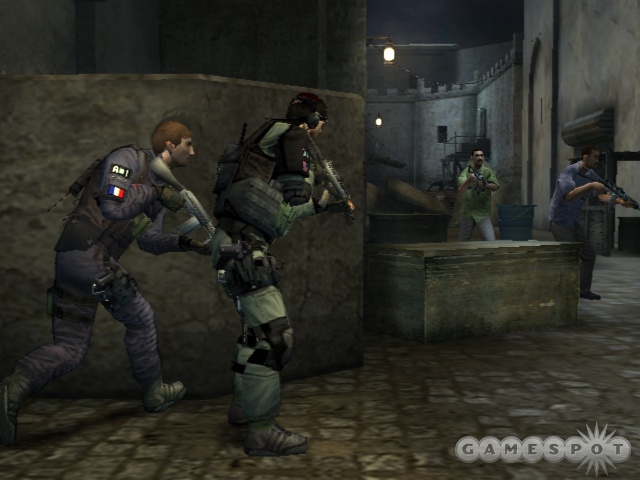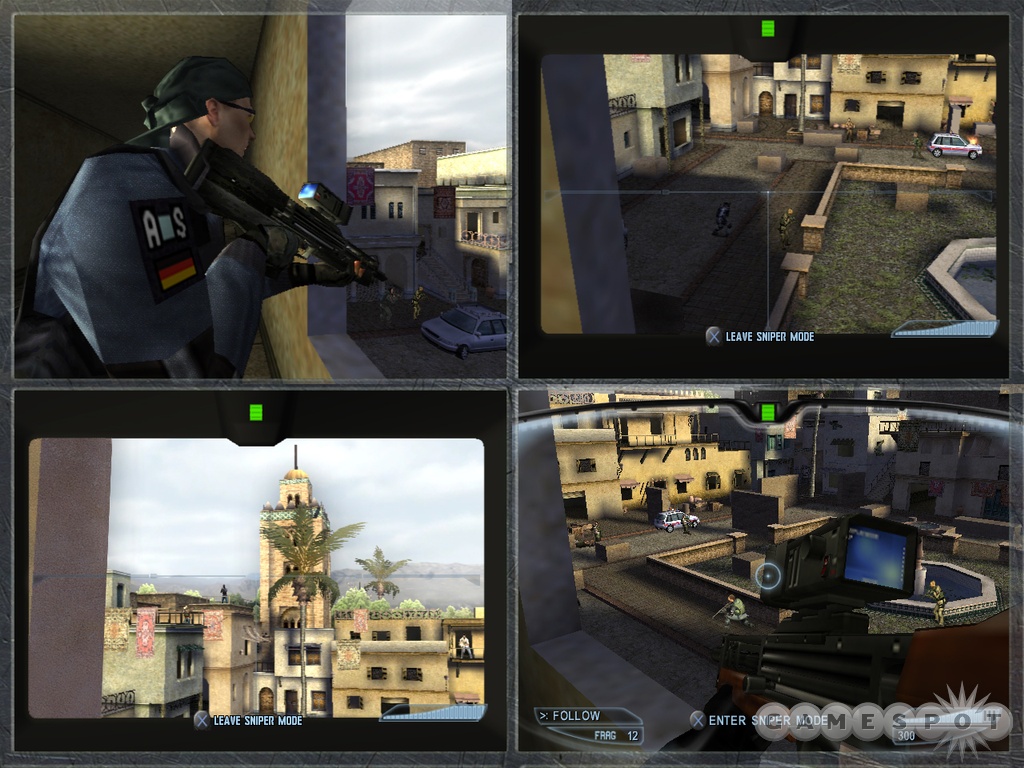Rainbow Six: Lockdown Hands-On
We play through a few work-in-progress levels from Ubisoft's next tactical shooter.
During a recent visit to Ubisoft's office we were able to get a little hands-on time with a work-in-progress PlayStation 2 version of Rainbow Six: Lockdown. The game was a little unstable and prone to crashing, but we still managed to play through a couple of levels from the story-driven campaign, and we even squeezed in a little two-on-two multiplayer time with Ubisoft representatives.

The first level we played was set in Algeria and was composed almost entirely of well-lit building interiors. Like the majority of the levels in the game, the Algerian mission saw us assuming the role of Rainbow team leader Ding Chavez, and we were able to give orders to three squadmates using a context-sensitive action button. The default function of the action button is simply to move your colleagues to any location that's in your line of sight, which, depending on the situation and your own style of play, will often prove far more useful than the "follow" command. Other orders that you'll find yourself using frequently in Rainbow Six: Lockdown will include having your team open or breach doors before attempting to clear the room (you'll also be able to slowly swing open and close doors by pressing up and down on the directional pad, as in Rainbow Six 3), and having them scout around corners in case there are any enemies lying in wait. The potential for some quite tactical battles with enemies was certainly evident during our time with the game, but, since their artificial intelligence appeared to be limited at best, we were able to play just as if it were a regular first-person shooter for the most part; the only difference was that we had three Rainbow team members in tow.
In the work-in-progress version of Rainbow Six: Lockdown, we encountered a number of enemies who were motionless until they became aware of our presence (by which time they were already getting shot at). Upon checking out one of the later levels in the game (set in the labyrinth-like basement of a castle), we found that the majority of our adversaries became more challenging only because they increased in number. In fact, the only times that we really felt compelled to use our colleagues for something other than opening doors was when we weren't able to scout around a corner (the feature hasn't been enabled for all of the corners in the game yet), and in the interest of self-preservation, we sent the squad on ahead into dangers unknown. If Rainbow Six: Lockdown were a game of chess, you might call them sacrificial pawns or something.
When we reached the end of the castle basement level, we progressed onto one of the new sniper missions that will be scattered throughout the campaign. Assuming the role of Rainbow sniper Dieter Webber, we found ourselves positioned in a tower high above the castle grounds, where the rest of the Rainbow team had come under fire from all directions. The sniper levels play a lot like Konami's Silent Scope shooters once you're in position, allowing you to move your crosshair around the screen more quickly when you're not actually looking through your gun's scope. What makes them infinitely more interesting, though, is the fact that you'll need to move between vantage points to get a shot at certain enemies and to avoid incoming fire. A couple of the enemies that we encountered, for example, were quick to target our position with rocket-propelled grenades when we were a little slow to pick them off.

When our time with the campaign missions came to an end, we were afforded our first look at a couple of the game's multiplayer options, namely the standard team deathmatch mode and an all-new "rivalry" mode. The multiplayer map that we spent the most time with was modeled after a prison, and it was large enough that it could easily accommodate 16 players without feeling crowded. In the team deathmatch mode the prison map was actually far too big, given that there were only four of us playing, but when we switched to the rivalry mode, it actually played quite well. The rivalry mode, for those of you familiar with Halo 2, is a lot like that game's territories mode, in which teams attempt to capture key strategic points on the map by changing the color (to their color) of these areas and then defending them. This has the effect of bringing enemies together in a handful of locations when they might otherwise be wandering around aimlessly in the hope that they'll find something to shoot. Like Halo 2's territories mode, the rivalry mode employed icons that allowed us to see in which direction the three strategic points (labeled A, B, and C) were and what their current status was.
Despite the issues that we encountered during our time with the work-in-progress version of Rainbow Six: Lockdown, the game will almost certainly be a significant improvement over its predecessor if Ubisoft and Red Storm Entertainment make good on all of their promises, like enemies that are more dangerous as you progress through the game and employ tactics, like flanking, suppression fire, and room-clearing, for example. We'll bring you more information on the game as soon as it becomes available.
Got a news tip or want to contact us directly? Email news@gamespot.com
Join the conversation